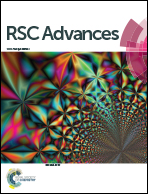A comparative study of nanostructured α and δ MnO2 for lithium oxygen battery application
Abstract
α- and δ-MnO2 nanomaterials with different morphology like urchins and flowers are successfully synthesized by a low temperature hydrothermal synthesis. The prepared nanostructures were applied as electrocatalysts for air cathodes in Li air batteries. The synthesized materials possess high electrocatalytic activity and the MnO2 catalysed electrodes doubled the initial cycling capacity of the Li air cells without any catalysts. We also observed reduced over potential and upon cycling with limited capacity, a very stable performance was obtained.


 Please wait while we load your content...
Please wait while we load your content...